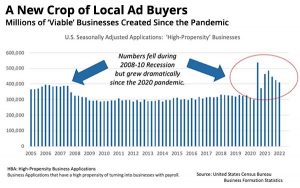Most businesses have some form of digital presence. A website, Facebook page, Twitter account… businesses know they need to be online in order to compete.
But far too many businesses think that creating a Facebook page is the end-game, expecting revenue to pour in after the hour they spent getting their page up and running.
It is possible – and essential – to use digital marketing tools to grow your business. But it takes work, time and, most importantly, a strategic plan in order to be successful.
The secret of using digital marketing to grow your business is not a fancy new tool or YouTube video claiming that “one simple trick” will earn you double your revenue. It is much simpler, and timeless: knowing your customer.
Your customer is the source of your revenue, and whether you’re engaging with him on- or off-line, you must have a deep understanding of his needs, pain points, lifestyle and more in order to make your product or service relevant to his life.
Your digital marketing strategy absolutely must include in-depth audience insights in order to be successful. Without these insights, you will waste time and resources, be unable to explain what worked and what didn’t, and in all likelihood give up on potentially lucrative digital marketing channels before you’ve even really begun.
Here are some examples of how businesses can use social data to inform their digital marketing strategy and grow their bottom line:
- By creating a persona based on the aggregate social data about their audience, a retail business was able to develop a new campaign that targeted 35-year-old professional women with a new line of office chic clothing.
- By exploring how their audience interacted with their own content and that of their competitors, an app developer was able to develop an email drip campaign that improved their lead generation by 25%.
- By monitoring sentiment and brand mentions on Twitter, an advertising network developed valuable relationships with the brands that their target audience engaged with most.
- By segmenting their audience into groups with common attributes, a software company created six distinct marketing campaigns that were targeted to each group, improving leads, customer retention and sales across the board.
- By inputting customer tweets into their CRM software, an auto dealer developed personalized messages for each of their VIP customers over the holidays, resulting in improved word-of-mouth and customer loyalty.
With today’s consumer using Twitter to talk about their daily lives, Facebook to share their favorite brands and Instagram to snap photos of where they shop, businesses have an unprecedented amount of data they can tap into to better understand their customers. And it is this understanding that will ultimately help their business grow.
Digital & Social Articles on Business 2 Community(139)




